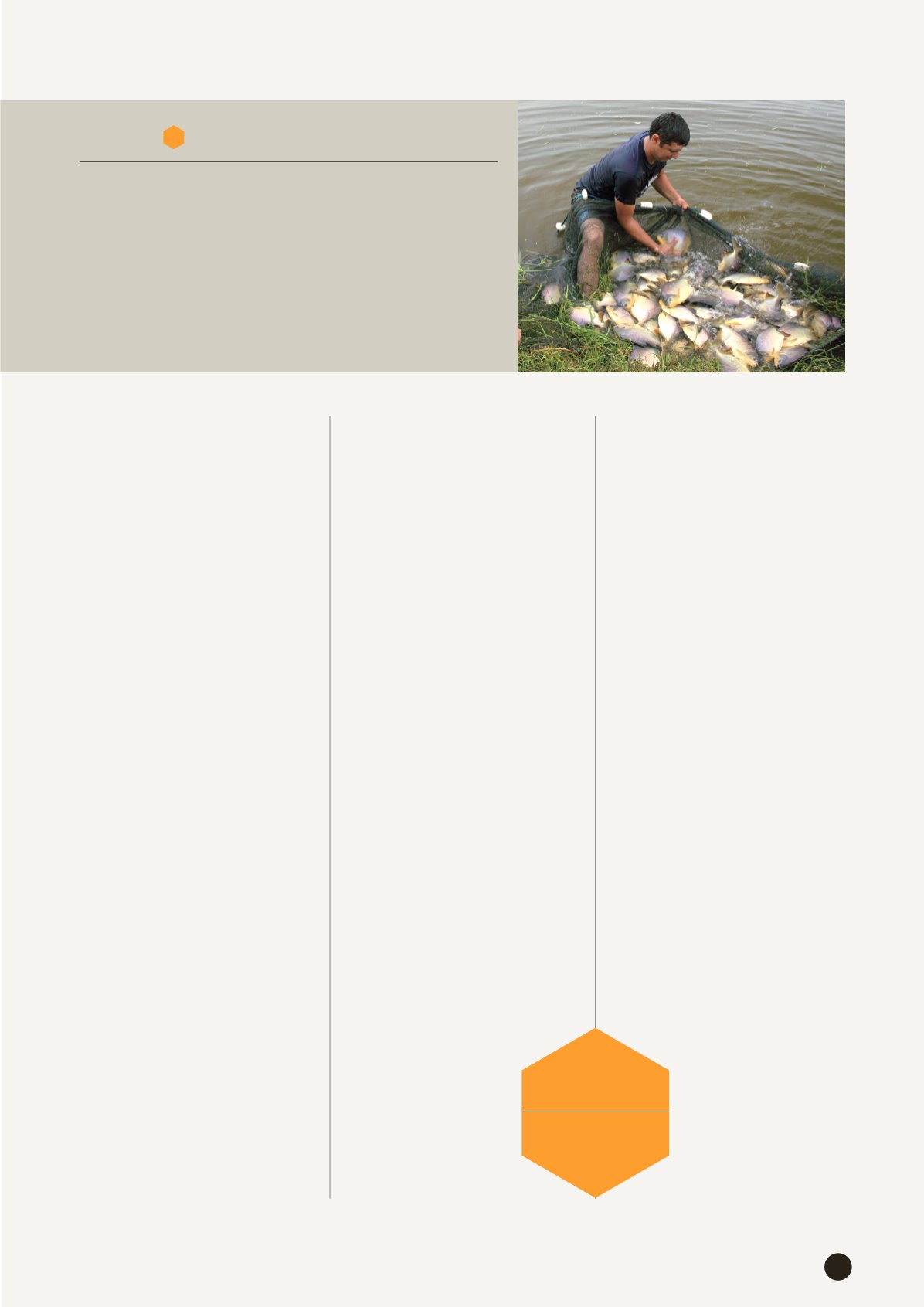

Operations
17
Located in South America, our
partner country Paraguay is a
landlocked nation with few rivers
and a lack of aquatic resources;
the majority of aquaculture-based
products must be imported. Of these,
pacu is an important aquaculture
consumer product for Paraguayans
and currently the second most
important product of the aquaculture
industry, with an annual production
worth US$3.66 million. However, the
country has been forced to import
fry from Brazil and Argentina for
many years because it lacks its own
fingerling breeding technologies.
As such, Paraguay has for many
years been actively engaged in
the artificial reproduction of pacu,
and with the assistance of Japan
and other countries, has run pilot
programs—but these programs have
not been successful. The National
University of Asunción (Paraguay)
has also conducted several breeding
trials but has been unable to break
through the technology bottleneck.
Creating Artificial Fry
ReproductionTechniques,
Developing the Pacu Industry
To assist Paraguay develop
the pacu industry and increase
local earnings, the governments of
Taiwan and Paraguay have jointly
been implementing this project
since September 2014. Based on
Taiwan's experience and success
in aquaculture, excellent techniques
for fry reproduction, acclimation and
feed preparation were introduced
to help Paraguay break through the
bottleneck in artificial fish breeding
technologies, establishing pacu
fingerling breeding techniques and
building capacity in breeding and
management.
From its implementation in
November 2014 to date, 276 pacu
brood fish were purchased in this
project for breeding, 230 broods
were selected and 100,000 fry were
successfully propagated. This year,
the laboratory formally launched the
automated fry production system for
large-scale artificial breeding.
For pacu breeding in Paraguay,
this has been a totally unprecedented
development and has provided an
innovative technology for artificial fish
breeding.
I n a d d i t i o n , t o e n h a n c e
aid effectiveness and project
sustainability, we have actively
trained cooperating personnel’s
capacity in the planning, setup and
management of hatchery, and have
also conducted breeding workshops
and seed teacher training to build up
pacu breeding technologies for the
government officials and farmers of
Paraguay.
With continued cooperation
b e t w e e n Ta i w a n
and Paraguay in the
implementation of this
project, it is anticipated
that by the end of the
project, Paraguay will
be able to produce on
its own over 30 percent
of the country's need
for fish fry. As well,
technology transfer will
enable local production to reach
2,600,000 pacu fry to develop
the pacu industry, consolidate the
domestic consumer market and the
price of the species, and raise local
earnings.
2.6
Stable production to meet
annual demand
million Fry
Paraguay
Pacu Fingerling Breeding and Cultivation
Project
3
Case Study


















